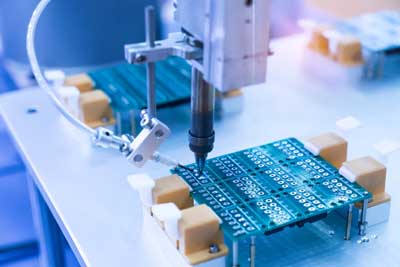A diode is an electronic device usually found in circuits. It only permits the flow of current in one way in the course. By doing this, they act as current flow regulators. Generally, there are many diodes, each with different specifications. This article will go over the 1n4002 Diode in further detail.
Contents
What is the 1n4002 Diode?
1N4002 belongs to the 1n400x family of rectifier diodes. Often we use them as current regulators in AC adapters for household appliances. Or in electronic devices for current rectification. Moreover, voltage boosting and voltage breakdowns are other applications that the Diode can do.
However, the 1n4002 Diode cannot switch applications since its relatively low speed. Furthermore, when comparing the rectifier diodes to the signal diodes, the former has higher current ratings and greater typical junction capacitance.
Importantly, for a 1N4002 Diode, 1A is its maximum current carrying capacity. However, it is built to tolerate voltage spikes of up to 30A. Therefore, we use it in circuits that can handle the power of less than 1A. In addition to this, it has a negligible reverse current of 5uA. With the above properties, the 1n4002 Diode can hold out a reverse voltage peak to 100V.

(electronic computer motherboard)
CAD Model for 1n4002 Diode
The figure below is a schematic symbol of a general-purpose silicon rectifier diode.
(the schematic symbol)
The figure below shows the general footprint of the 1n400x diode family.
(the general footprint of the Diode)
Source: Wiki commons
Pin Configuration for the 1n4002 Rectifier Diode
The 1n4002 has two pins: the anode and cathode. Distinguishingly, the positive end of the Diode is the anode, while the negative side is the cathode. We see a color band representing the cathode’s side on the Diode’s body.
| pin | pin name | description |
| 1 | Anode | allows current to enter the Diode |
| 2 | Cathode | allows current to exit the Diode. |
The Diode is a one-way valve because it only enables current flow in one direction. The current can’t travel from the cathode to the anode. Once current enters the Diode through the anode, it can only flow through the cathode and out of the Diode.

(a diode representation logo with a band.)
Special Offer: Get $100 off your order!
Email [email protected] to get started!
Characteristics of the 1n4002 Diode
- Firstly, it is available for DO-41 & SMD packages package types.
- Secondly, it is made up of an average forward current of 100mA
- Thirdly, it is a silicon rectifier diode type.
- In addition, it has a maximum repetitive reverse voltage of 100v
- Also, it has a non-repetitive max forward current of 30A.
- Then, it has a 100v reverse voltage maximum RMS.
- It has max storage and operating temperature of around -55 to 175⁰c
- Lastly, the Diode has a max power dissipation of 3W.

( electronic workshop.)
Advantages of the 1n4002 Diode
Listed below are some of the advantages.
- Firstly, it experiences a low forward voltage drop in its operation.
- Secondly, it has a high forward surge current capability.
- In addition, it has a low reverse leakage.
- Also, it has a low cost in construction.
- Lastly, it has a high soldering temperature guaranteed.
Equivalent Diodes to the 1n4002 Diode
There are various types of diodes in the electronics world. For instance, we can use any diode in the 1n400x diode series as alternative options to the 1n4002. The 1n4003, 1n4004, 1n4005, 1n4006, and 1n4007 are among the diodes in this series.
On the other hand, we can substitute the 1N4002 Diode with the 1n5408, 1n4733A, 1N4148, 1N5822, and the Zener diodes.

(Zener diodes shown in a picture.)
1N4002 Encapsulation
(a 1n4002 diode representation.)
The shaded area is the DO-41 package with a shaded area of 5.22mmX4.21mm. We have a 25.4mm extending semiconductor material on both sides of the box.
Summary
We hope this article is of great help to you. Would you please reach out to us for more information on this article or any circuits?
Special Offer: Get $100 off your order!
Email [email protected] to get started!






